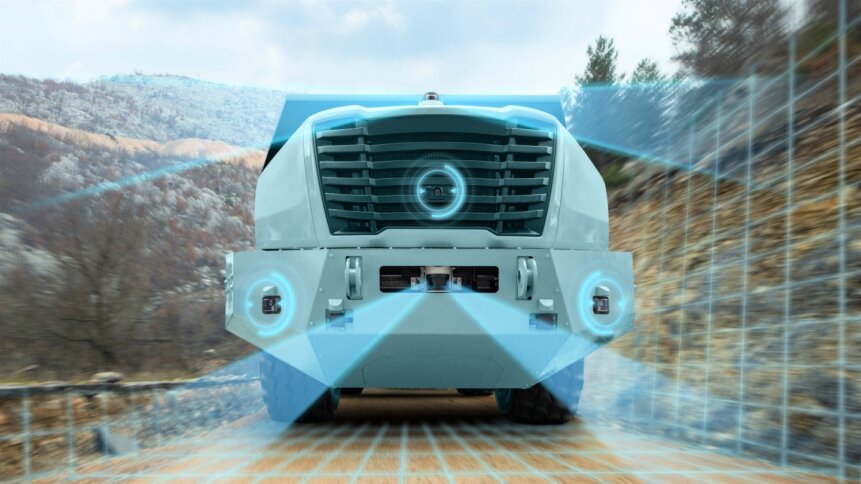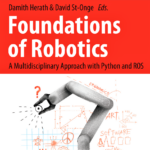DINAMINE: device materials get Euro 12.3 million digital boost

Space-age designs and AI wizardry regularly grab the limelight, but device materials deserve a mention too in today’s tech scene. The ready supply of key components is sometimes taken for granted, but recent global supply chain shocks are forcing a rethink. In mining operations, large-scale activity makes it tough for smaller producers to compete. But digital tools could tip the balance and provide device materials resiliency at the same time.
The argument has won over EU funders who have committed EURO 12.3 million to a three-and-a-half-year project involving various consortium members across Norway and other European countries. As demand for minerals increases – through technology transitions such as renewable energy and the electrification of transport modes – experts believe that small and medium-sized mines could add value.
Import concerns
“These mines play a decisive role for Europe to become more independent of imports and more competitive in terms of sustainability – both economically and environmentally, but also socially, through responsible mining practices,” said Sean Salazar – a senior engineer based at the Norwegian Geotechnical Institute (NGI), which is leading the initiative. Other partners include Norway-based Skaland Graphite, SINTEF – a large applied research organization with 2000 employees – and engineering firm AMV.
Outside of Scandinavia, the consortium pulls together expertise from Felmica Minerais Industriais (Portugal), Ciaotech (Italy), Worldsensing (Spain), Spectral Insdustries (the Netherlands), and Slovenia’s National Institute of Chemistry. And teams will use funds to build a smart database system, machine vision-based tools, and real-time geomechanical monitoring technology.
The project has identified two test sites that are representative, more broadly, of raw materials and value chains across Europe where members will demonstrate the breakthroughs. Dubbed DINAMINE, the focus of the work is to pave the way for the concept of a ‘Digital and Innovative MINE of the future’. “The keyword to bring about this paradigm shift is digitalization,” notes Mahdi Shabanimashcool – who also works at the NGI and is responsible for the project’s technical concept.
Device materials push
The mining sector has long been viewed as ripe for digital transformation. And a push for greater access to device materials is renewing attention on the topic. Computing services giant IBM has highlighted a variety of ways that digital solutions can be deployed to make operations more efficient. These include autonomous machinery so that workers don’t have to venture into potentially dangerous environments. Self-operating kit can help with staffing issues too – mines can be located in remote areas where it can be difficult to attract workers.
There is an environmental angle as well. Better use of digital technologies can play a role in minimizing the impact of mining operations and assist in remediation and clean-up – for example, through improved monitoring. And it’s one reason tech firms are teaming up with mining equipment providers to add connectivity and cloud solutions to new designs.
Data analysis offers multiple rewards and can help geologists to better understand the ore bodies and guide drilling campaigns. DINAMINE includes a work package that’s dedicated to improving rock engineering-related activities. This includes rock mass mapping, optimization of rock blasting, and suggesting relevant stabilizing measures.
Operators are benefiting from the gains being made across Industry 4.0, but they are subject to the scrutiny that mining attracts. “Social and environmental concerns are already compelling mining to look for safer, more efficient, and sustainable ways of conducting the business,” write Felipe Sánchez and Philipp Hartlieb, authors of a 2020 study on innovation in the mining industry. “Reduction of energy and water consumption, lower emissions, and waste generation are all factors that will be in the core of the mine of the future”.
Industrial IoT
DINAMINE is not Europe’s only digital initiative designed to help the mining sector. A Horizon 2020 program launched in May 2020 and set to conclude in April 2024 is developing an industrial internet of things platform that goes by the catchy name of ‘DIG_IT’. “The ultimate goal of the research is to develop novel technology solution[s] known as digital twins for health management of mining machinery in cooperation with other partners in the project,” comment members based at Tampere University’s Mechatronic Research Group.
The team has expertise in complex machine systems and autonomous robots and, as part of DIG_IT, is coordinating efforts to gather data from humans, assets, and the environment at multiple European mines. Again, the project reflects the need in 2022 for operators to be able to extract raw materials in a profitable, environmentally sound, and safe way – in terms of both the mining workforce and neighboring communities.










